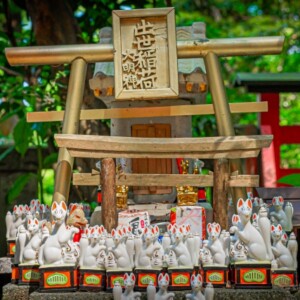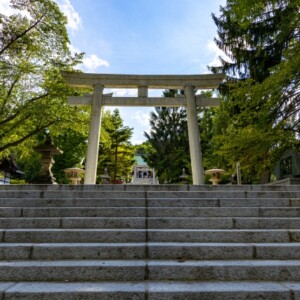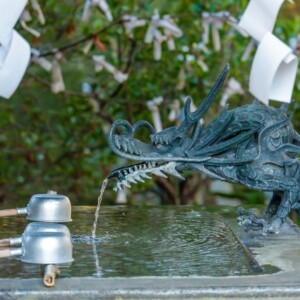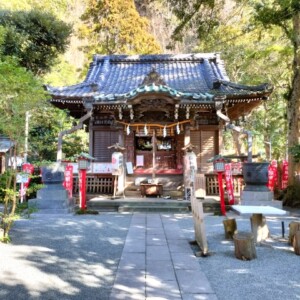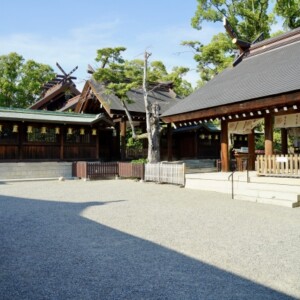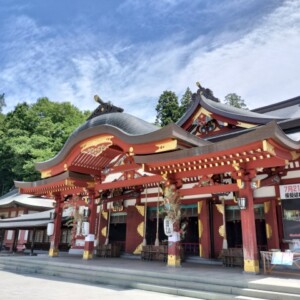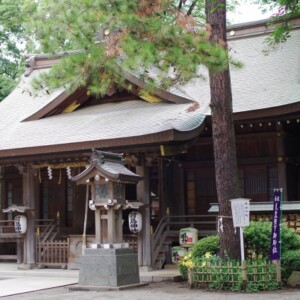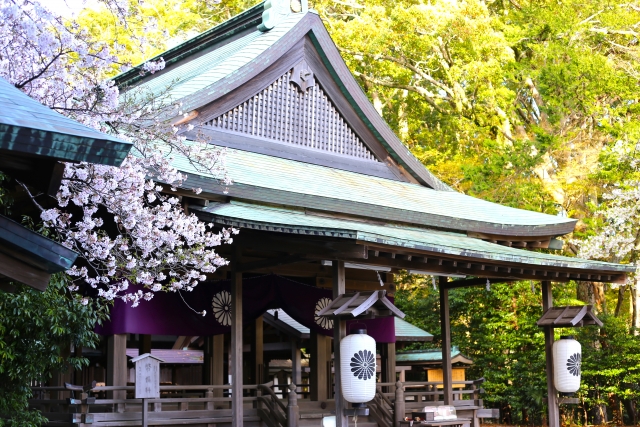
Kamakura-no-miya|Complete guide to the history, highlights, and worship information of this historic shrine
Kamakura-no-miya Shrine, located in the Nikaido district of Kamakura, is a highly prestigious shrine built by order of the Emperor Meiji. It is known as a shrine dedicated to Prince Gora and is nicknamed “Daitonomiya” by the locals. The charms of Kamakura-gu Shrine, which attracts many worshippers for the belief in a deity to ward off bad luck and to take the place of the deity, will be introduced in detail here, from its history to its highlights.
Outline and basic information on Kamakura-gu Shrine
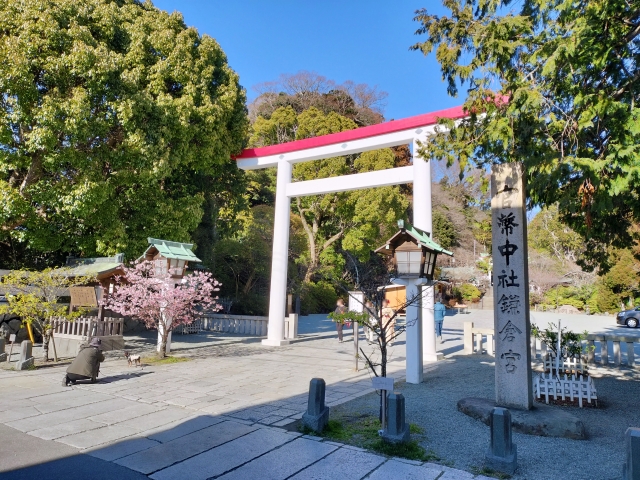
Kamakura-no-miya Shrine is located in Nikaido, Kamakura City, Kanagawa Prefecture, and is one of the fifteen Kemmu Chukyo shrines, formerly classified as a government-run Chusha. Although it is a relatively new shrine built in the Meiji era (1868-1912) in Kamakura, where many old temples dating back to the Kamakura period still remain, it is revered by many for its historical significance and prestigious status.
History and Origin
In February 1869, Emperor Meiji ordered the construction of a shrine dedicated to Prince Moro in honor of his efforts in the Kenmu restoration, which was aimed at restoring the Emperor’s rule from the samurai class to an Emperor-centered society, and named the shrine “Kamakura-no-miya” (Kamakura Palace).
Prince Gora was born in 1308 as the son of Emperor Godaigo, and at the age of 11, he entered the great pagoda of Enryakuji Temple on Mount Hiei. When his father, Emperor Godaigo, planned to overthrow the Kamakura Shogunate, Prince Moriyoshi returned to his former position and collaborated with Masanari Kusunoki and others, contributing greatly to the overthrow of the Kamakura Shogunate.
However, after the new administration of Kenmu, he was captured due to a conflict with Ashikaga Takauji, and was killed by his retainer Fuchibe Yoshihiro at the order of Takauji’s younger brother Naoyoshi in 1335 during the turmoil of the Nakasenno Rebellion. It was a tragic end at the young age of only 28.
On July 15, the shrine was given the title of Kamakura-no-miya, and in July, the shrine pavilion was built on the present site of Toko-ji Temple.
Gods and Divine Virtues
The deity of Kamakura Shrine is Prince Morinaga. It is sometimes called Daitonomiya (大塔宮) locally, after Prince Morinaga’s common name, Ootonomiya (大塔宮).
Prince Gora was a wise and valiant man from his childhood, and became the head of Tendai at Enryaku-ji Temple on Mount Hiei. He struggled and played an active role in pursuing the ideals of his father, Emperor Godaigo, and finally overthrew the Kamakura shogunate, bringing peace to the world.
At Kamakura-gu Shrine, he is believed to have divine virtues to ward off bad luck, take the place of others, heal illnesses, bring luck in victory, and fulfill good marriages. Many worshippers come to the shrine to pray for the strength to overcome the trials of life, based on the tumultuous life of Prince Gora.
Kamakura-gu Shrine Highlights

The precincts of Kamakura Palace are home to many attractions associated with Prince Moraga, allowing visitors to feel the weight of history as they visit the shrine. Combined with the natural beauty of the four seasons, the temple deeply impresses visitors.
Attractions of the Shrine and Precincts
The shrine pavilions of Kamakura Shrine are beautiful buildings that retain many of the characteristics of Meiji-era shrine architecture. The worship hall is an open structure that warmly welcomes visitors, and the main hall quietly enshrines the spirit of Prince Moriyoshi.
Visitors to the temple grounds can enjoy the beauty of nature throughout the four seasons, with someiyoshino cherry trees and ogatama (a city-designated natural treasure) in spring, hydrangeas and kyokyo in summer, maples in fall, and Japanese apricots in winter. In particular, although there are not many Kawazu cherry trees on the left side of the torii gate, they can be enjoyed over a long period of time because the best time to see them is at different times of the year.
The Shinto garden is like a shrine grove that was extensively landscaped in 2021 for the first time in about 50 years, with a variety of trees planted, maintaining a rich natural environment despite its urban location.
The earthen prison where Prince Gora was imprisoned
There is an old legend that the hole in the bank behind the main shrine is the earthen prison in which Prince Moriyoshi was imprisoned for about nine months. Although a separate admission fee is required to visit the dungeon behind the hall of worship and the main shrine, the Shinto garden, and the hall of treasures, it is a valuable place where visitors can see up close the vivid traces of history.
The earthen prison is a two-tiered earthen cavern, and is believed to be the place where Prince Moriyoshi spent approximately nine months before his final days. By visiting this earthen prison, visitors can gain a deeper understanding of the tragic fate of Prince Moriyoshi and the harsh realities of the time.
The area surrounding the dungeon is a sacred space that is surrounded by silence, and visitors can feel the weight of history and deep respect for Prince Goryo.
The Substitute and the Yakuwari-ishi (stone for breaking off evil spirits)
Kamakura-gu Shrine enshrines a “Substitute Jizo” (a substitute for the Jizo). The deity is enshrined in the shrine of Prince Murakami Hikoshiro Yoshimitsu, a loyal retainer of Prince Gora, who saved the prince many times from danger during his lifetime.
In order to overthrow the Kamakura shogunate, Prince Moriyoshi raised an army at Yoshino Castle in Nara, but was cornered by the Kamakura shogunate forces. It is said that Yoshimitsu Murakami, a vassal of Prince Gora, took the prince’s armor and committed seppuku in his place, allowing the prince to escape.
The Murakami Shrine, which stands to the right of the hall of worship, enshrines Yoshimitsu Murakami, the man who saved Prince Morara, as its deity. In front of the shrine, there is a life-size wooden figure called “Nadegade-sama,” which visitors can stroke the body of the substitute, and it is said that it is good to stroke the part of the body that you want to be healed. The statue, with its kindly face and clasped palms, is popular with many visitors for its blessings to ward off bad luck and cure illnesses.
The Kamakura-gu Shrine also has a sake cup-warrior house. Visitors can pay 100 yen to receive a small plate and throw it onto the Yakuwari-ishi stone, which is a popular activity among worshippers.
Cultural Properties of the Treasure Hall
The Kamakura-gu Shrine Treasure House is a historic building constructed in 1869 as a place of lodging for the Emperor Meiji’s visit (April 16, 1873). The Treasure House houses and exhibits items related to Prince Moriyoshi, providing visitors with an in-depth understanding of his life and historical background.
On display are calligraphic works related to the end of the Tokugawa Shogunate, including works by Ito Hirobumi from Choshu, Tokugawa Nariaki, the feudal lord of Mito who championed the Emperor’s exclusion of foreigners, and the “Three Boats at the End of the Edo Period” – Katsu Kaishu, Takahashi Sudoushu, and Yamaoka Tesshu. These exhibits are valuable materials that show that Prince Gora was positioned as a spiritual pillar of the Meiji Restoration.
Admission to the Hall of Treasures is charged: 300 yen for junior high school students and older, and 150 yen for elementary school students. For those who wish to gain a deeper understanding of the history of Prince Gora, this facility is definitely worth a visit.
Visiting Guide
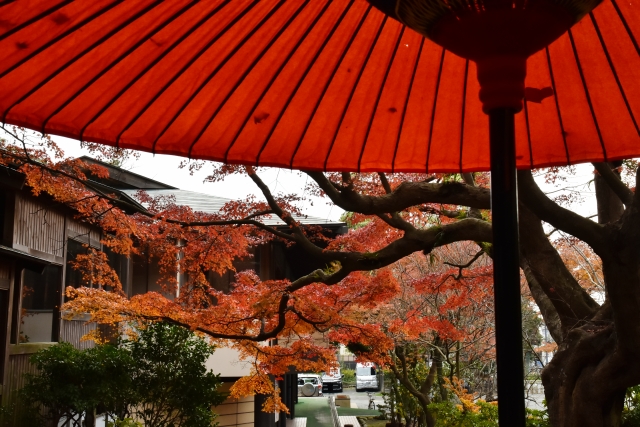
It is important to pay respect to the spirit of Prince Moriyoshi when visiting Kamakura Shrine and to do so with all your heart. As a highly prestigious shrine, you will be able to receive deeper divine blessings by observing the proper manners and etiquette.
Methods and Manners of Worship
Visiting Kamakura Shrine is done in accordance with general shrine etiquette. When passing through the torii gate, bow and walk down the approach to the shrine, avoiding the center of the path. At the hand- and mouth-cleansing booth, purify your body and mind by cleansing your left hand, then your right hand, and then your mouth, in that order, before heading to the hall of worship.
When you visit the hall of worship, you should bow twice deeply and then bow twice. First, bow deeply twice, then clap twice, and finally bow deeply once. It is important to pray with all your heart, thinking of the tumultuous life of Prince Gora.
Please refrain from loud conversations and use of cell phones on the temple grounds, and try to maintain a sacred atmosphere. Photography should only be taken in permitted areas, and care should be taken not to disturb other worshippers.
Annual and Seasonal Events
Various events are held throughout the year at Kamakura Palace, and visitors can enjoy special seasonal experiences.
The Kamakura-gu Regular Festival will be held on August 20 at 11:00 a.m., with the eve of the festival starting at 4:00 p.m. on August 19. There will be a children’s portable shrine and a dedication performance at 10:00 a.m. on August 19, and night stalls and Bon Odori dancing will be held in the evening on August 19 and 20. This is an important event to remember Prince Moriyoshi together with local people.
On July 23rd, at around 1:30 p.m., the Prince Goryo Festival will be held. This is an important ceremony that marks the anniversary of Prince Gora’s death according to the lunar calendar.
On June 30, from 3:00 p.m., the Natsukoshi Grand Purification Ceremony of Kayanowan will be held, and the popular “Make Your Own Kayanowan Guard” workshop will also be held.
In early October, “Kamakura Takigi Noh (Noh Play)” (advance reservations required) is usually held in the precincts of the shrine. Kamakura Takigi Noh” has been held since 1959 and is one of Kamakura’s representative traditional events, the third oldest in Japan. The Noh played over a bonfire in the ethereal atmosphere of the night is a solemn event to comfort the soul of Prince Moriyoshi.
Red Seal and Charm Information
A beautiful red seal can be obtained at Kamakura-gu Shrine. The red seal book with the shrine name in yellow and gold letters is also popular, and is especially recommended for those who live near Kamakura and wish to make a monthly pilgrimage. The shrine office is open from 9:00 a.m. to 4:00 p.m., and you can write with care.
The bright red lion’s head protection associated with Prince Gora is a particularly popular good-luck charm. The lion’s head charm has long been said to “eat bad luck and bring happiness,” and is believed to grant wishes such as “to ward off bad luck, bring good fortune, traffic safety, and take one’s place. It looks cute and is also appreciated as a Kamakura souvenir for your loved ones.
Other amulets are also available according to various divine virtues, such as an amulet associated with the Substitute and an amulet for the fulfillment of a good marriage, which is said to cut off bad relationships and bring good ones together by Prince Gorya. Special prayers can also be requested by paying a first-earning fee.
Access and usage information
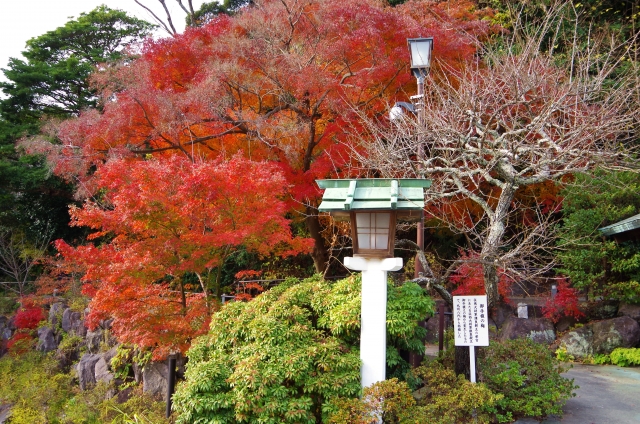
Kamakura-gu Shrine is easily accessible from Kamakura Station, making it easy to visit by public transportation. With other famous landmarks such as Zuisenji Temple and Kakuonji Temple in the vicinity, it is a convenient base from which to explore Kamakura.
Transportation Access
Take the Keihin Kyuko Bus bound for Kamakura-gū (Kamakura Palace) at the East Exit (5) of Kamakura Station on the JR Yokosuka Line or Enoshima Electric Railway and get off at the Kamakura Palace (Daitōgū). The bus ride takes about 10 minutes.
It is also accessible on foot, a 30-minute walk from the East Exit of Kamakura Station. You can enjoy the townscape of Kamakura while walking along a quiet path through a residential area. Egara Tenjin Shrine is located on the way, and if you have students preparing for exams, it is recommended that you visit the shrine in conjunction with a visit to the god of learning.
Also nearby is Hojo, a lovely restaurant renovated from an old private house, which is a popular place to have a meal after visiting the shrine.
<Address> 154 Nikaido, Kamakura-shi, Kanagawa-ken 248-0002
Hours of Operation, Fees, and Parking
Visiting Kamakura Palace is generally free, but there is a fee to enter the Treasure House. The shrine office is open from 9:00 a.m. to 4:00 p.m. and accepts red seals and various prayers.
The Treasure Hall is open from 9:00 a.m. to 4:30 p.m. (registration until 30 minutes before), and admission is 300 yen for junior high school students and older and 150 yen for elementary school students. Admission is free for the disabled upon presentation of a disability certificate, and free for the city’s senior citizens upon presentation of a Fukuju Techo (certificate of good health). Group discounts (30 people or more) are also available, but advance notice by phone is required.
For details on parking, please contact Kamakura Palace in advance or check the official website. Since Kamakura is a sightseeing area, traffic congestion can be expected, especially on holidays, so public transportation is recommended.
Reference sites
Official website of Kamakura-gu Shrine: https://www.kamakuraguu.jp/



